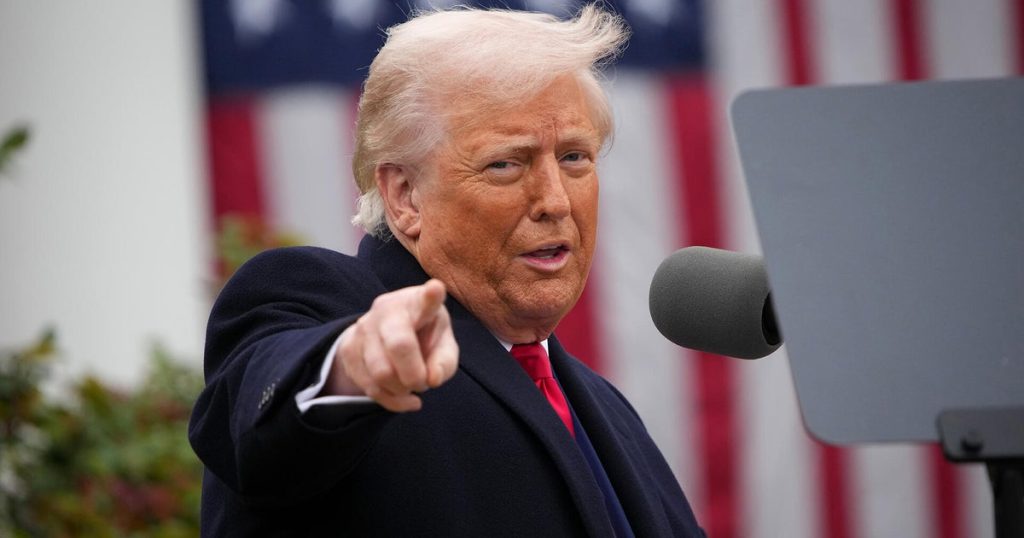In a significant escalation of trade tensions, President Trump announced on Monday his intent to impose an additional 50% tariff on Chinese imports if China does not retract its plan to implement a retaliatory 34% tariff on U.S. goods. The announcement came in a post on his Truth Social app, reflecting heightened concerns over the growing trade war between the two nations. This move aims to address existing trade imbalances and is poised to affect various sectors of the economy.
| Article Subheadings |
|---|
| 1) Introduction to the Tariff Controversy |
| 2) Details of the Proposed Tariff |
| 3) Global Impact of the Tariffs |
| 4) Economic Repercussions and Forecasts |
| 5) Public and Global Reaction |
Introduction to the Tariff Controversy
The trade relationship between the United States and China has long been fraught with tension, but recent developments have pushed it to a potentially new conflict level. The announcement made by President Trump regarding the imposition of a 50% tariff comes in response to China’s own tariffs, creating a tit-for-tat situation that threatens to escalate further. The timing of this announcement—just days before the proposed application of Chinese tariffs—highlights the precarious nature of international trade agreements and the political strategies involved. With such a significant stake in each economy, both countries find themselves in a potentially destabilizing situation that could have broader implications beyond tariffs.
Details of the Proposed Tariff
According to President Trump, a response will be triggered if the Chinese government does not promptly withdraw its plan to implement a 34% tariff on American imports scheduled to take effect. In his statements, he emphasized that the U.S. would react decisively to what he described as long-term tariff abuses by China. The original tariff’s effective date is set for April 9, 2025. Trump’s proclamation indicated that if by April 8 China does not retract its proposed increases, the U.S. will impose new tariffs that could have dramatic effects on both economies. By threatening such a high percentage, Trump is aiming to leverage negotiation tactics in a critical economic arena.
Global Impact of the Tariffs
The implications of these tariffs extend beyond Sino-American relations, impacting global commerce and trade dynamics. Many experts caution that continued tariff increases could lead to heightened economic instability worldwide. Sectors such as agriculture, technology, and manufacturing, which are heavy consumers of raw materials from both countries, may face considerable disruptions. The initial announcement of a reciprocal tariff by Trump, affecting about 90 countries, adds another layer of complexity to the international trade landscape. Analysts have noted that this could encourage other nations to follow suit, resulting in a global trade war that may significantly alter global market practices.
Economic Repercussions and Forecasts
Economic experts are currently forecasting various outcomes resulting from these tariff increases. Initial reactions from Wall Street suggest rising concerns about the possibility of a recession triggered by the ongoing trade war. Tariffs inevitably result in higher costs for U.S. importers, which often get passed on to consumers—thereby raising prices on goods. This could lead to inflationary pressures that the economy has been attempting to control. Additionally, businesses that depend on international trade face uncertainty that could restrict growth and investment. Economists warn of a ripple effect that might unleash contractions across other interlinked markets.
Public and Global Reaction
The announcement of these impending tariffs has elicited mixed reactions both domestically and internationally. While some supporters of the Trump administration hail the aggressive stance as a necessary measure to protect American interests, critics argue it could jeopardize hard-won relationships and result in higher costs for consumers. International leaders and organizations have expressed alarm over the potential escalation of a trade war, calling for diplomatic engagement to resolve trade disputes. Many businesses are bracing for impact as they consider strategies to mitigate potential losses in this uncertain climate. The growing tension provoked by tariffs and the broader implications of such economic strategies have kept global markets on edge.
| No. | Key Points |
|---|---|
| 1 | President Trump threatens a 50% tariff on Chinese imports if retaliatory tariffs are not retracted. |
| 2 | The proposed additional tariff is to take effect on April 9, 2025. |
| 3 | Concerns are growing about the potential for a global economic downturn due to escalating trade tensions. |
| 4 | Higher tariffs could lead to increased consumer prices and inflation in the U.S. |
| 5 | The international community is worried about the repercussions of a trade war and its effects on global trade. |
Summary
President Trump’s declaration of a potential 50% tariff on Chinese imports presents a pivotal moment in international trade relations, reflecting the complexities and challenges concomitant with global economic policies. As both nations prepare for possible retaliatory measures, the implications for consumers, businesses, and economies worldwide have led to heightened concerns about stability and growth. A nuanced understanding of the factors contributing to this trade stance will be essential in navigating the evolving landscape of U.S.-China relations and restoring balance in global trade.
Frequently Asked Questions
Question: What triggered the tariff announcement from President Trump?
The announcement was prompted by China’s plan to impose a 34% tariff on U.S. imports, which led Trump to threaten an additional 50% tariff as a form of economic retaliation.
Question: When are the new tariffs set to take effect?
The proposed 50% tariff on Chinese imports is expected to take effect on April 9, 2025, provided that China does not retract its own tariff plans by April 8.
Question: What are the potential economic implications of these tariffs?
The tariffs could lead to increased costs for consumers, potentially reigniting inflation and triggering consequences for the broader economy, including a risk of recession.


